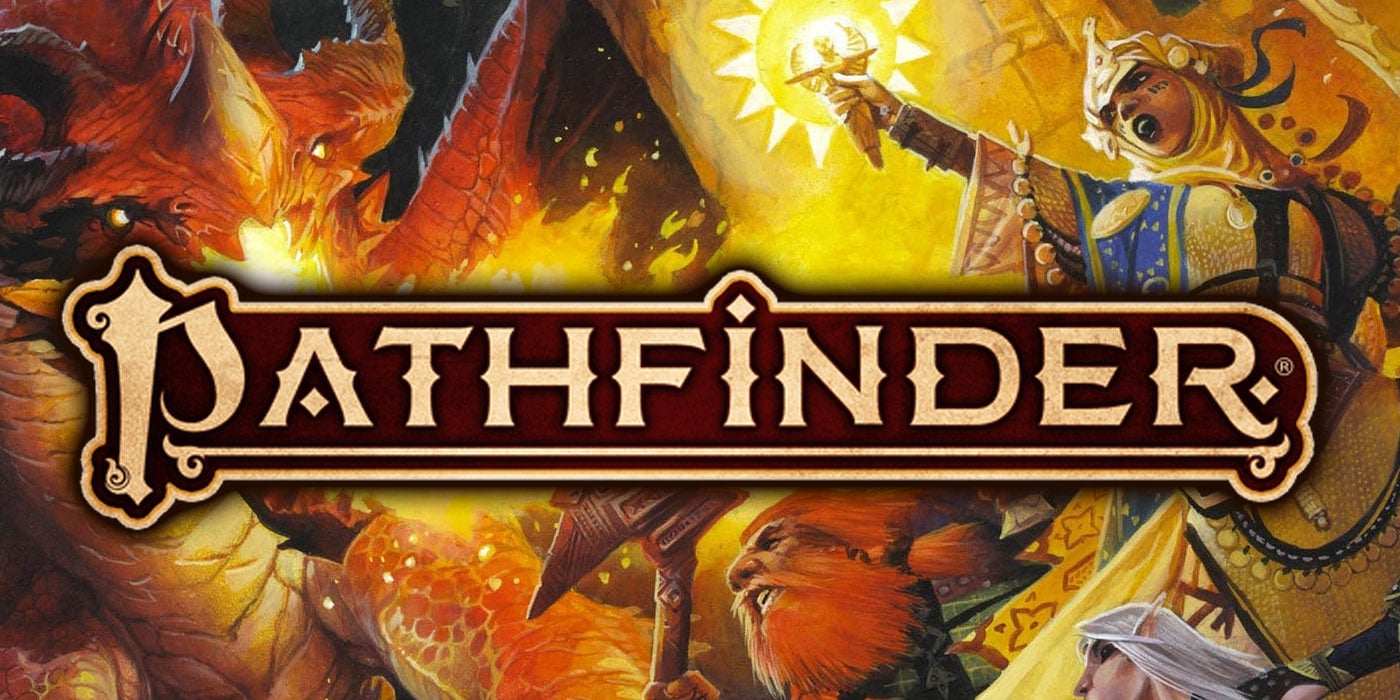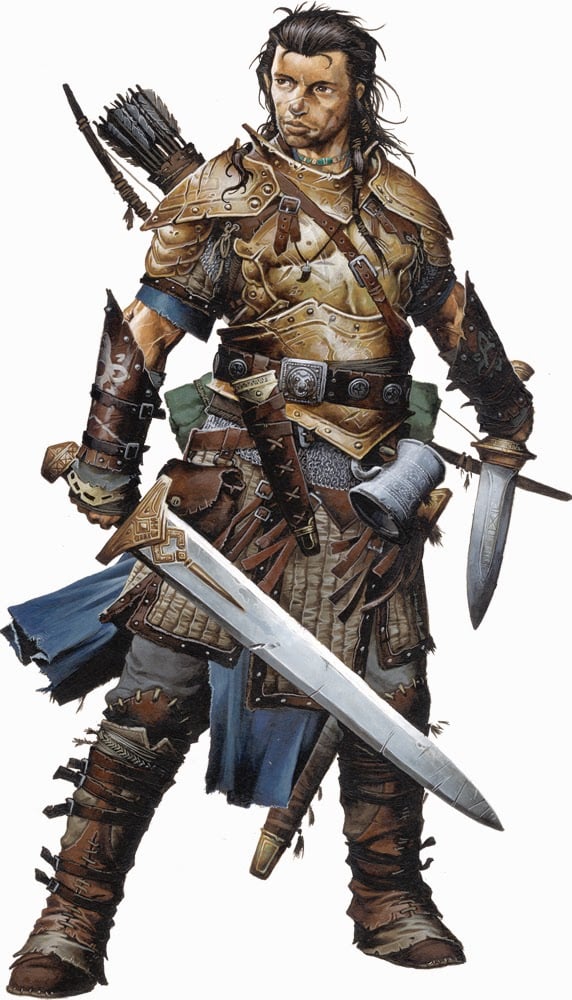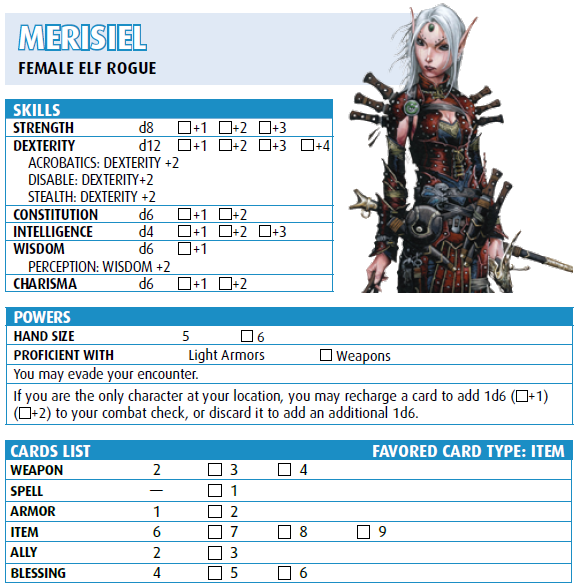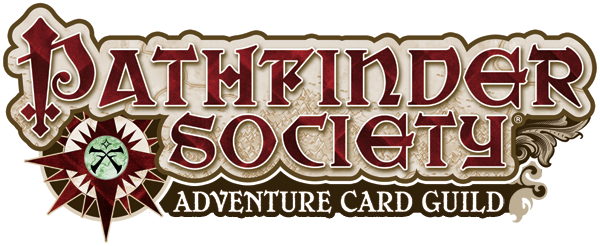Pathfinder Adventure Card Game Review


 |
| Pathfinder Adventure Card Game Logo1 |
Paizo publishing, best known for their revival of the Dungeons and Dragons 3.5 OGL, has released a cooperative card game built around the theme of a multi-session role-playing campaign. But how well does the game extrapolate the role-playing experience into a card-only format?
As a younger man, I ran and played in several regular role-playing games ranging from stock and standard Dungeons and Dragons Expeditions to home-brewed adaptations of Savage Worlds to fit a Mass Effect campaign to weekly Iron Kingdoms sessions. However, when my son was born in the spring of 2013, I had to say goodbye to these hobbies for reasons that most parents will understand: allowing myself to be spirited away from the house in order to participate in regular four-hour role-playing marathons was not something that I could justify either to myself, my spouse, or my mewling newborn. Enter Paizo’s Pathfinder Adventure Card Game.
What is the Pathfinder Adventure Card Game? –
For the uninitiated, the Pathfinder Adventure Card Game is a cooperative game for one-to-four players out of either two currently released core sets: Rise of the Rune Lords, a standard fantasy role-play affair, and Skull and Shackles, a pirate-themed campaign in the same setting. Each core set comes with character cards for seven different unique characters ranging from Valeros the Fighter, to Merisiel the Rogue, or Ezren the Wizard. Character Add-On packs can be purchased for either of these core sets that will add an additional four characters to choose from while also allowing the game to support up to six players.
 |
| Valeros, the Fighter1 |
Each of these core sets represents a unique set of seven adventures combining into a single over-arching adventure path. Rise of the Rune Lords, the set that I have been playing with, comes with a short three-scenario introductory adventure called Perils of the Lost Cost and a second five-scenario goblin-themed adventure entitled Burnt Offerings. Each of these individual scenarios takes between 60 and 90 minutes to play and should be played in consecutive order provided that you successfully completed the previous scenario. Once you and your companions complete Burnt Offerings, there are five more Adventure Packs to purchase and play through, each with five additional scenarios for a total of 33.
Gameplay –
A single scenario of the Pathfinder Adventure Card Game consists of exploring different location decks with the volume of location decks determined by the amount of players in the game and the selection of locations determined by the scenario. Each location has a predetermined allotment of card types in them as well as specific special rules for exploring and closing that location. The goal of exploring these locations is to corner and eliminate the villain for the scenario. Exploring requires that you flip the top card of the location deck over in order to encounter whatever may be hiding. This could be anything from a monster to dispatch, a trap to disable, a chest to open, a spell to learn, a weapon to wield, or an ally to gain.
The Apothecary location, for example, will contain one random monster card, one random weapon card, three random spells, one random item, one random ally card, and two random blessings. Skipping an exploration at the Apothecary allows you to shuffle d6 cards from your discard pile back into your deck, effectively the same as healing.
Encountering the villain early can result in the villain’s escape to an open location. Encountering a Henchman card or milling the entire location deck will allow you to attempt to close the location so that the villain cannot escape to it. To close the Apothecary, for example, you must succeed at an Intelligence or Craft check of 6.
If you can encounter and defeat the villain while all other locations are closed, you win the scenario, earn some kind of reward, and gain the ability to move onto the next scenario. Scenarios use a thirty turn clock, however, so players need to make the most out of their turns unless they might risk losing the scenario, which they will have to repeat before they move on.
 |
| Merisiel’s Character Card1 |
Each player starts out controlling an individual character with their own familiar block of skills in addition to some unique powers and restrictions for the deck that they can play with. Skills in the Pathfinder Adventure Card Game are not handled unlike the Savage Worlds system, which assigns a die value to a skill instead of a base number.
For example, Merisiel, the elvish rogue, rolls a d8 on Strength checks, a d12 on Dexterity checks, a d6 for Constitution checks, a d4 for Intelligence, and a d6 for Wisdom and Charisma. If Merisiel explores a location and encounters an Ally card, she might be forced to roll her d6 in Charisma to meet the required target number on the Ally card. If she succeeds, the Ally is added to her hand, which might give her benefits in later checks or simply allow her to explore the location again instead of passing off her turn, a valuable ability given the game’s 30-turn timer. Combat checks are generally handled by rolling a character’s Strength or Melee skill against a target number, but certain weapons, spells, and abilities allow characters to roll with their stronger skills, like ranged weapons and daggers using Dexterity and spells using Intelligence, Wisdom, or Charisma.
A player’s deck and hand size are determined by the character they are playing. Decks are comprised of six card types: weapons, armor, items, spells, allies, and blessings. Spell-casting characters like Ezren the Wizard or Lini the Druid will generally be able to take a high volume of spells or items but will generally be restricted from taking weapons or armor, while weapon-centric characters like Valeros the Fighter will have decks full of weapons and armor but be unable to start off with spells in their decks. Characters play cards from their hands in a variety of manners: revealing, discarding, recharging, burying, or banishing. Revealing is simply what it sounds like; you show that you have the card in order to activate a specific power. For example, revealing a dagger allows a character to make a combat check using their Dexterity die in addition to a d4. Discarding a card takes a card from your hand and puts it in the discard pile. These cards are effectively out of play unless you gain them back, often via healing abilities. Recharging a card takes a card from your hand and puts it at the bottom of your deck to be drawn again later. Burying a card is like discarding, save that cards that are buried cannot be recovered and used again until the next scenario. Banishing a card puts it back in the game box and removes it from your hand forever.
A character’s hit points are effectively represented by the cards in their hand and deck, so discarding, burying, and banishing cards is effectively the same as using one’s hit points up to accomplish specific tasks. While the simple solution to this seems to be not to discard, bury, or banish your cards, if you want to beat the clock, you will often be forced to make hard decisions about whether or not to do so. Additionally, losing a combat and taking damage forces you to discard as well. The duality created here makes the Pathfinder Adventure Card Game a lot about risk management. If you stack the odds in your favor by discarding, burying, or banishing too many cards and you’ll end up using far more of your resources than you might otherwise. If you are too conservative with your hand, you might fail a combat check and end up having to discard your entire hand anyway.
As you complete scenarios and adventures, players gain random cards and the ability to “level up” their characters by gaining Skill Feats, Card Feats, or Power Feats. Examples of these can be seen on Merisiel’s card, shown above.
Organized Play –
 |
| Pathfinder Society Adventure Card Guild Logo1 |
You can find the rules for how organized play works on their website.
Closing Thoughts –
As someone who wishes to scratch that RPG itch without investing the huge volume of time often required of regular role-playing groups, the Pathfinder Adventure Card Game is a home run. It has fantastic risk management mechanics, rewards teamwork, does not require a game master, and is a great gateway product for people who might be intimidated by the idea of the traditional role-playing game. I highly suggest heading out to local game store and trying to get a demo of this fast-growing game.
As I continue to play the Pathfinder Adventure Card Game, I fully expect to report back more on my experiences with commentary, tactics, and more. Stay tuned!
1These images use trademarks and/or copyrights owned by Paizo Inc., which are used under Paizo’s Community Use Policy. We are expressly prohibited from charging you to use or access this content. This article is not published, endorsed, or specifically approved by Paizo Inc. For more information about Paizo’s Community Use Policy, please visit paizo.com/communityuse. For more information about Paizo Inc. and Paizo products, please visit paizo.com

